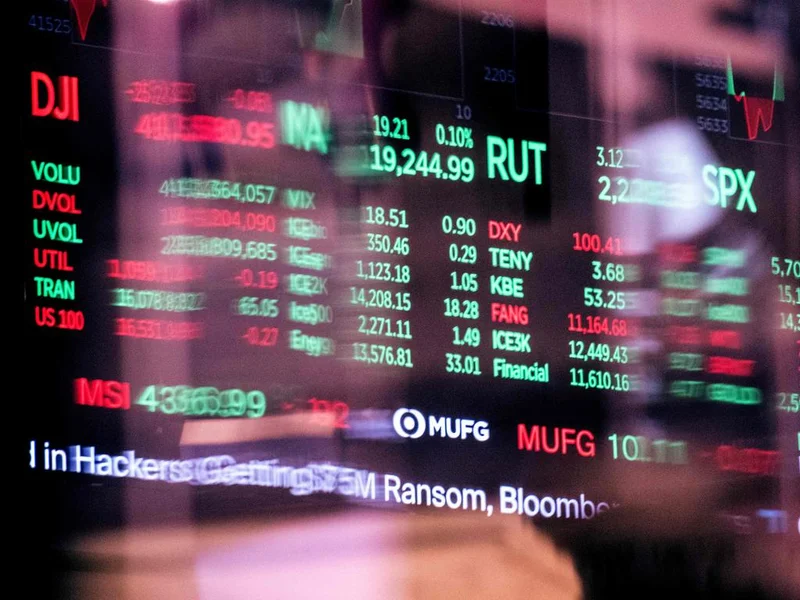Article Directory
The Federal Reserve cut its benchmark interest rate by a quarter of a percentage point on Wednesday. On the surface, this was the widely expected outcome—a modest easing of policy to stimulate a labor market that has shown signs of slowing. Yet, the real story isn't the cut itself, but the context in which it was delivered: a statistical fog, a divided committee, and a chairman who gave with one hand and took away with the other.
The move, the second cut this year, brings the federal funds rate to a range between 3.75% and 4%. But the decision was anything but unanimous. The Federal Open Market Committee (FOMC) was fractured. Stephen Miran, a recent White House advisor, pushed for a more aggressive half-point cut, reflecting the relentless pressure from the Trump administration. On the other end of the spectrum, Kansas City Fed President Jeffrey Schmid voted to hold rates steady.
This wasn't a unified board executing a clear strategy. It was a negotiated settlement. The 0.25% cut feels less like a data-driven conclusion and more like the precise midpoint between conflicting political and economic ideologies. It’s a move designed to placate everyone just enough to avoid a mutiny, which is hardly a foundation for sound monetary policy. What does it say about the committee’s conviction when the vote reveals such fundamentally different assessments of the economy?
Navigating in a Data Black Hole
The core problem for the Fed is that it's attempting to fulfill its dual mandate—stable prices and maximum employment—while effectively flying blind. Fed cuts US interest rates again despite 'flying blind'. The ongoing government shutdown has delayed the release of the official September jobs report, the single most important data set for assessing the health of the labor market. In its place, the committee is left with a patchwork of alternative, and often less reliable, sources.
Private payroll data from ADP, for instance, suggested the economy lost 32,000 jobs in September. Fed Chair Jerome Powell himself described the labor market as "less dynamic and somewhat softer." But these are assumptions based on incomplete signals. Making a decision on interest rates without the Bureau of Labor Statistics report is the monetary policy equivalent of a surgeon agreeing to operate based on a grainy photograph of the patient. It’s a profound methodological compromise. How can an institution that prides itself on being "data-dependent" make a critical judgment on employment when its primary employment data is missing?
I've analyzed hundreds of FOMC statements, and the degree of qualification in Wednesday's language is a significant outlier. This isn't the confident, data-backed Fed we’ve seen in the past. It’s an institution grappling with a severe information deficit, forced to make policy that will affect hundreds of millions of people based on what amounts to an educated guess.

The other half of the mandate, inflation, presents its own conundrum. The latest reading was about 3%—to be more exact, the year-over-year CPI figure continues to hover a full percentage point above the Fed’s 2% target. Powell seems to be treating the impact of tariffs as a series of "one-time price increases," a convenient narrative that allows the Fed to focus on the sputtering labor market. But is that a durable economic assessment, or is it a temporary justification for easing policy in the face of political heat? If this inflation proves to be stickier than anticipated, this rate cut could look profoundly misguided in just a few months.
Powell's Hawkish Easing
Perhaps the most telling moment of the day came not from the FOMC statement, but from Powell’s press conference. After delivering the rate cut the market had priced in, he immediately injected a heavy dose of uncertainty about the future. Fed cuts rates again, but Powell raises doubts about easing at next meeting. "A further reduction of the policy rate in December is not a foregone conclusion," he stated, adding, "in fact, far from it."
The market’s reaction was immediate and telling. The major indices—the Dow, S&P 500, and Nasdaq—all ticked down. It wasn't a panic, but rather a quiet, digital sigh of disappointment. Traders, like me, didn't hear a chairman confidently guiding the economy; we heard a man hedging his bets. He delivered a dovish action (the rate cut) immediately followed by hawkish rhetoric, effectively neutralizing the signal.
This entire episode is playing out against a backdrop of unprecedented political interference. President Trump has publicly and repeatedly called for massive rate cuts, attempted to fire a board member (Lisa Cook, who remains in her role pending a legal battle), and successfully installed a loyalist who immediately voted for a larger cut. The Fed is supposed to be an independent institution, insulated from short-term political whims. But it’s impossible to look at the current environment and conclude that its decisions are being made in a sterile, apolitical vacuum. The pressure is real, and it complicates every data point and every public statement.
When the central bank's guidance becomes this murky, what are businesses and investors supposed to do? Powell’s message creates ambiguity, not clarity, and ambiguity is the enemy of capital investment and stable markets.
A Policy Guided by Guesswork
Ultimately, this rate cut wasn't a decisive act of economic stewardship. It was a holding pattern. The Fed is caught between a slowing economy, persistent inflation, intense political pressure, and a critical lack of reliable data. In this environment, the quarter-point cut was the path of least resistance—an action that avoided both the aggressive easing demanded by the White House and the hawkish stance that a strict reading of the inflation data might suggest. But a policy of compromise is not a strategy. It's a deferral of a more difficult decision. The real risk facing the economy isn't a recession or stagflation; it's a crisis of confidence in the very institution designed to navigate these challenges. The market can price in a bad decision; it cannot price in a rudderless ship.




